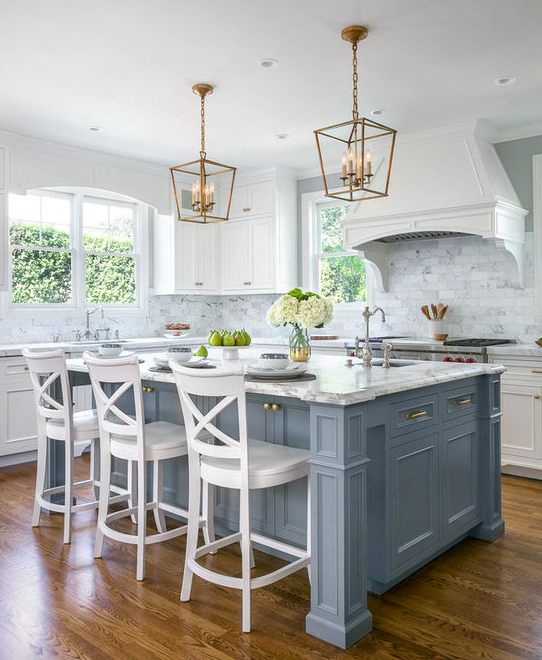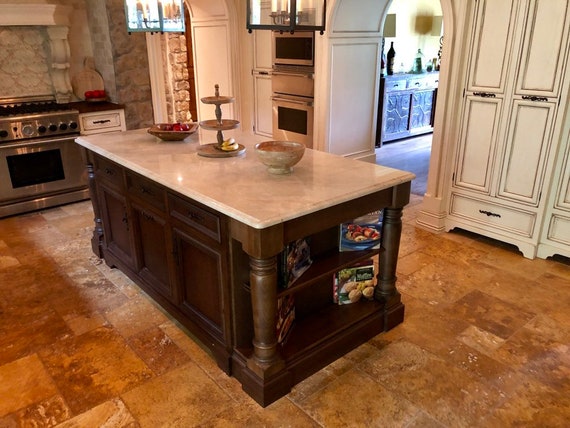The Value of a Sturdy Kitchen Area Island Leg in Creating a Practical Cooking Area
A strong cooking area island leg serves as a fundamental element in developing a useful food preparation environment, providing required support for both the counter top and numerous cooking area activities. The stability it provides can substantially lower the risk of accidents in high-traffic areas, while likewise adding to the general visual comprehensibility of the space. As kitchens advance into multifunctional areas for cooking, dining, and interacting socially, the selection of products and style considerations for island legs becomes progressively essential. Recognizing these elements can transform your kitchen area into a safer and much more reliable location, motivating more expedition into the finest options available.
Benefits of Sturdy Island Legs
Offering necessary assistance, durable kitchen island legs play a crucial duty in enhancing the functionality and sturdiness of kitchen area islands - kitchen island leg. These legs not just bear the weight of the countertop and any type of additional products put on the island, yet likewise add to the general security of the structure. A well-supported cooking area island guarantees that it remains practical and upright, also under heavy usage, which is especially vital in hectic kitchen settings
Furthermore, sturdy island legs can boost the visual appeal of the kitchen area. They provide a strong framework that can match various layout styles, from contemporary to traditional. This flexibility enables home owners to customize their kitchen islands according to individual preference while guaranteeing that the structural stability continues to be uncompromised.
Along with their helpful function, durable kitchen island legs can also enhance safety and security. A stable island decreases the threat of crashes triggered by tottering or tipping, which is particularly crucial in families with kids or senior people. Furthermore, strong legs can facilitate a seamless circulation of tasks, permitting for efficient meal prep work and social interactions within the kitchen area. Eventually, spending in strong kitchen area island legs is important for a functional and visually pleasing cooking area.
Products for Cooking Area Island Legs
When picking materials for kitchen island legs, toughness and visual charm are essential elements to think about,. The most common materials consist of wood, metal, and engineered wood, each offering unique benefits.
Wood, such as oak, maple, or cherry, is a classic option due to its toughness and ageless appeal (kitchen island leg). It can endure significant weight and is immune to put on, making it perfect for high-use cooking area atmospheres. Additionally, wood can be stained or repainted to complement different cooking area styles
Steel legs, typically crafted from stainless steel or wrought iron, provide a commercial and modern appearance. They are extremely strong and can sustain substantial tons while being resistant to dampness and warmth, which is helpful in a cooking location. Metal legs can additionally be quickly cleaned up, improving their functionality.

Design Factors To Consider for Stability
The selection of visit this page products for kitchen island legs straight influences the layout considerations for security. When developing a kitchen island, it is extremely important to examine the weight-bearing capacity of the selected products. Much heavier products, such as solid timber or metal, generally provide better stability, particularly under the stress of day-to-day use.
Additionally, the leg layout need to incorporate correct geometry to boost stability. A larger base raises the support location, reducing the threat of tipping or tottering. Consideration needs to likewise be provided to the height of the legs; disproportionate leg sizes can cause imbalance, endangering the total read the full info here security of the island.
Additionally, the circulation of weight throughout the island is crucial. Ensuring that the leg placement lines up with the heaviest elements, such as appliances and counter tops, will certainly better enhance stability.
Maintenance Tips for Durability

Depending on the material of the legs-- whether timber, steel, or composite-- suitable cleansing techniques need to be employed. Metal legs might need a light polish to stop rust and maintain their radiance.
Furthermore, tightening screws and bolts on a regular basis can guarantee stability and stop tottering. Think about strengthening the legs with additional braces or sustains to improve toughness if the kitchen area island experiences hefty usage. Using a safety coating or visit this page sealant can secure against moisture and discolorations, lengthening the life expectancy of the legs. By following these upkeep pointers, homeowners can ensure their kitchen area island legs stay robust and useful for several years ahead.
Picking the Right Leg Style
Routine maintenance guarantees that kitchen area island legs continue to be functional and durable, but picking the ideal leg style is just as crucial for both appearances and support. The choice of leg design can considerably influence the overall style and harmony of your kitchen area.

Capability is an additional vital aspect. As an example, thicker legs or those with a sturdy base can sustain larger countertops and devices, improving the island's utility. Alternatively, slim legs might produce a ventilated look, suitable for lighter styles yet possibly much less helpful.
Final Thought
In recap, the relevance of sturdy kitchen island legs can not be overstated in the creation of a useful cooking location. These legs provide essential support, enhance stability, and add to the general visual of the kitchen.
A strong kitchen island leg offers as a basic part in developing a useful cooking atmosphere, supplying essential support for both the counter top and different kitchen area tasks.Offering essential assistance, durable kitchen area island legs play a critical duty in improving the capability and toughness of cooking area islands. Ultimately, spending in strong cooking area island legs is crucial for a functional and aesthetically pleasing cooking location.
Consideration needs to also be given to the height of the legs; out of proportion leg lengths can lead to imbalance, compromising the general security of the island.
Wooden legs supply heat and a classic appearance, while steel legs provide a contemporary and industrial feel.